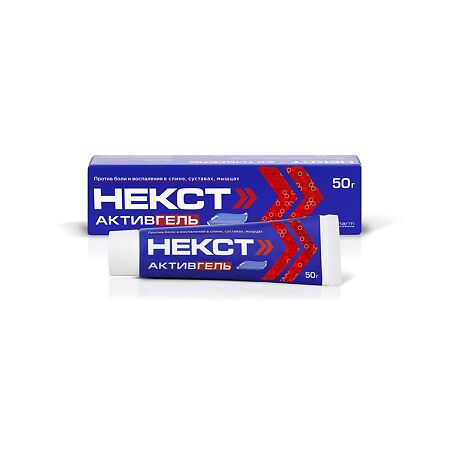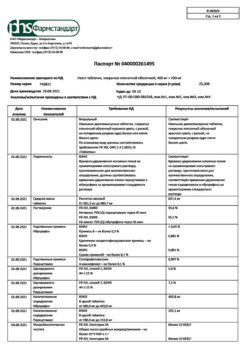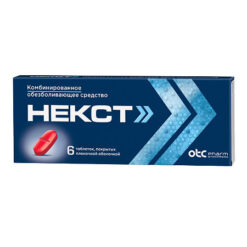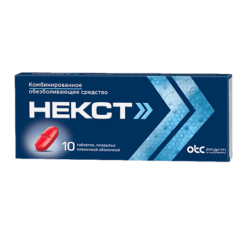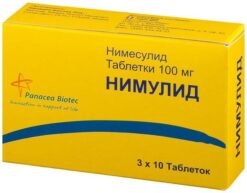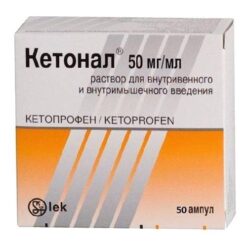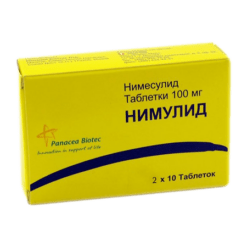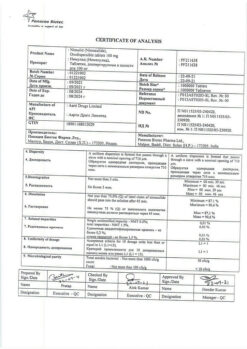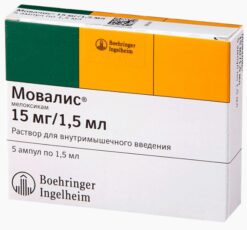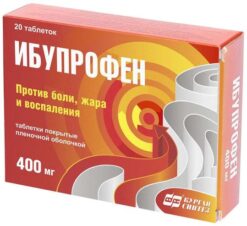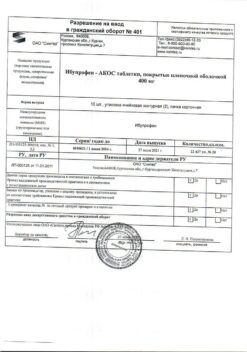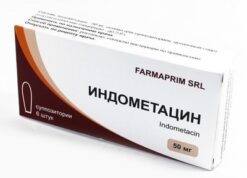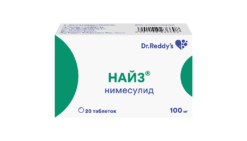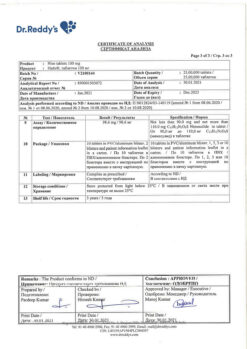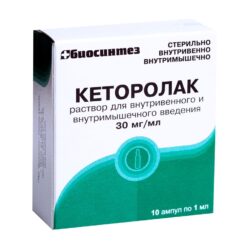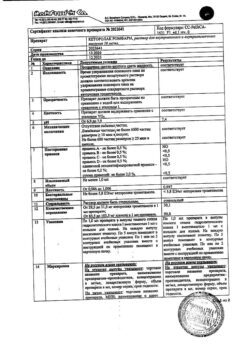No products in the cart.
Nextt Aktivgel, gel 5% + 3% 50 g
€12.48 €10.40
Description
Pharmacotherapeutic group: Non-steroidal anti-inflammatory drug (NSAID).
ATX code: M02AA13
Pharmacological properties
Pharmacodynamics
NEXT ACTIVEGEL is a combination of two active substances – ibuprofen and levomenthol.
Ibuprofen is a non-steroidal anti-inflammatory agent, a derivative of propionic acid, non-selectively blocks cyclooxygenase 1 (COX-1) and cyclooxygenase 2 (COX-2) enzymes, thus inhibiting the synthesis of prostaglandins – mediators of pain, inflammation and hyperthermia.
When used topically, ibuprofen has analgesic, anti-inflammatory and anti-edema effects (reduces exudation and edema due to inflammation).
Levomenthol has a local irritant effect, which explains the rapid development of the analgesic effect of the drug.
The combination of ibuprofen and levomenthol reduces pain and inflammation; it is effective for painful joints on movement and at rest and reduces morning joint stiffness.
Pharmacokinetics
After application to the skin, ibuprofen is detectable in the epidermis and dermis after 24 hours. It achieves high therapeutic concentration in the underlying soft tissues, joints and synovial fluid. There is practically no clinically significant systemic absorption.
The maximum concentration of ibuprofen in plasma during topical administration is 5% of the maximum concentration during oral administration of ibuprofen. Ibuprofen is metabolized in the liver. It is excreted by the kidneys (not more than 1% unchanged) and, to a lesser extent, with the bile through the intestine.
Indications
Indications
As a local analgesic and anti-inflammatory agent for conditions such as muscle pain, back pain, arthritis, pain from ligament injuries and sprains, sports injuries and neuralgia.
Pharmacological effect
Pharmacological effect
Pharmacotherapeutic group: non-steroidal anti-inflammatory drug (NSAID).
ATX code: M02AA13
Pharmacological properties
Pharmacodynamics
NEXT ACTIVGEL is a combination of two active substances – ibuprofen and levomenthol.
Ibuprofen is a non-steroidal anti-inflammatory drug, a propionic acid derivative, that indiscriminately blocks the enzymes cyclooxygenase 1 (COX-1) and cyclooxygenase 2 (COX-2), as a result of which it suppresses the synthesis of prostaglandins – mediators of pain, inflammation and hyperthermic reaction.
When applied topically, ibuprofen has an analgesic, anti-inflammatory and anti-edematous effect (reduces exudation and swelling caused by inflammation).
Levomenthol has a local irritant effect, which causes the rapid development of the analgesic effect of the drug.
The combination of ibuprofen and levomenthol reduces pain and inflammation, is effective for joint pain during movement and at rest, and reduces morning stiffness of the joints.
Pharmacokinetics
After application to the skin, ibuprofen is detected in the epidermis and dermis after 24 hours. Reaches high therapeutic concentrations in the underlying soft tissues, joints and synovial fluid. There is practically no clinically significant systemic absorption.
The maximum plasma concentration of ibuprofen when administered topically is 5% of the maximum concentration level when ibuprofen is administered orally. Ibuprofen is metabolized in the liver. It is excreted by the kidneys (no more than 1% unchanged) and, to a lesser extent, with bile through the intestines.
Special instructions
Special instructions
It is necessary to avoid getting the drug into the eyes, lips and other mucous membranes, damaged areas of the skin.
After application, do not apply an occlusive (sealed) bandage to the skin.
Avoid exposure to sunlight on the area where the drug is applied.
With long-term use of large amounts of the drug, there is a risk of developing systemic side effects.
Before using the drug, you should consult your doctor if you have kidney disease.
Impact on the ability to drive vehicles and machinery
The drug does not affect the ability to drive vehicles or operate machinery.
Active ingredient
Active ingredient
Ibuprofen, [Levomenthol]
Composition
Composition
Composition per 1 g of gel:
Active ingredients:
ibuprofen – 50.0 mg,
levomenthol – 30.0 mg
Excipients:
propylene glycol – 100.0 mg,
ethanol 95% – 300.0 mg,
carbomer – 20.0 mg,
diisopropanolamine – 55.0 mg,
purified water – up to 1000.0 mg.
Pregnancy
Pregnancy
The use of the drug during pregnancy and breastfeeding is contraindicated.
If it is necessary to use the drug during lactation, you should
stop breastfeeding.
Contraindications
Contraindications
Hypersensitivity to ibuprofen or other components of the drug;
hypersensitivity to acetylsalicylic acid and other NSAIDs;
complete or incomplete combination of bronchial asthma, recurrent polyposis of the nose and paranasal sinuses and intolerance to acetylsalicylic acid or other NSAIDs (including a history);
violation of the integrity of the skin at the site of application of the drug (including infected wounds and abrasions, weeping dermatitis, eczema);
children under 14 years of age;
pregnancy, lactation period.
With caution
Before using the drug, you should consult a doctor if you have concomitant diseases of the liver and kidneys, gastrointestinal tract, exacerbation of hepatic porphyria, bronchial asthma, urticaria, rhinitis, polyps of the nasal mucosa, chronic heart failure, as well as elderly patients.
Side Effects
Side Effects
The frequency of adverse reactions was assessed based on the following criteria: very often (≥1/10), often (from ≥1/100 to <1/10), infrequently (from ≥1/1000 to <1/100), rarely (from ≥1/10,000 to <1/1000), very rarely (<1/10,000), frequency unknown (frequency cannot be determined) determined based on available data).
– Immune system disorders
Frequency unknown: hypersensitivity reactions (nonspecific allergic reactions and anaphylactic reactions), respiratory tract reactions (bronchial asthma, including its exacerbation, bronchospasm, shortness of breath, dyspnea), skin reactions (itching, urticaria, purpura, exfoliative and bullous dermatoses, including toxic epidermal necrolysis syndrome Lyell), Stevens-Johnson syndrome, erythema multiforme, eczema, photosensitivity), Quincke’s edema.
– Gastrointestinal disorders
Frequency unknown: abdominal pain, dyspepsia.
– Renal and urinary tract disorders
Frequency unknown: renal dysfunction.
With long-term use, systemic side effects of NSAIDs may develop.
If side effects occur, you should stop using the drug and consult a doctor.
Interaction
Interaction
The drug may enhance the effect of drugs that cause photosensitivity.
Clinically significant interactions with other drugs have not been described.
Due to the fact that even with topical use of ibuprofen the possibility of a systemic effect of the drug cannot be completely excluded, caution should be exercised when used simultaneously with the following drugs: anticoagulants and thrombolytic drugs, antihypertensive drugs, acetylsalicylic acid, other NSAIDs. Theoretically, when used simultaneously with other NSAIDs, side effects may increase.
Overdose
Overdose
Overdose phenomena with external use of the drug have not been described.
If the drug is taken orally, headache, vomiting, drowsiness, and decreased blood pressure may occur. It is recommended to lavage the stomach (only within an hour after administration), taking activated charcoal, alkaline drinking, forced diuresis, and symptomatic therapy.
Storage conditions
Storage conditions
At a temperature not exceeding 25 °C.
Shelf life
Shelf life
2 years.
Manufacturer
Manufacturer
Lecco CJSC, Russia
Additional information
| Shelf life | 2 years. |
|---|---|
| Conditions of storage | At a temperature not higher than 25 ° C. |
| Manufacturer | Lekko ZAO, Russia |
| Medication form | gel for external use |
| Brand | Lekko ZAO |
Other forms…
Related products
Buy Nextt Aktivgel, gel 5% + 3% 50 g with delivery to USA, UK, Europe and over 120 other countries.

